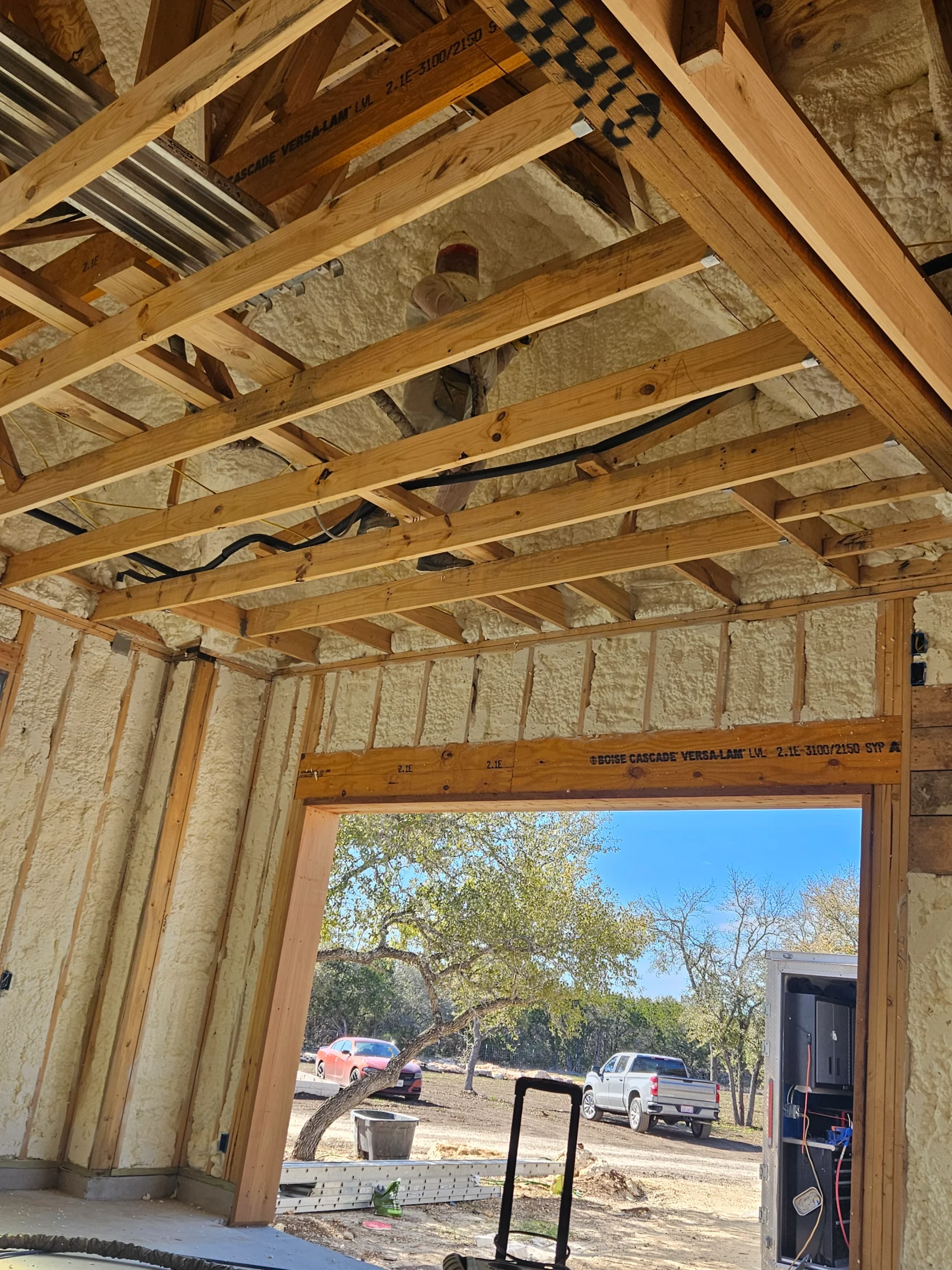
Yes, open cell spray foam can be a highly effective solution for reducing persistent allergy issues. By creating a superior air barrier, it significantly limits the infiltration of common outdoor allergens like pollen, dust, and other pollutants into your living space. Unlike traditional insulation, which often leaves gaps and allows for air leakage, open cell foam expands to fill every crack and crevice, effectively sealing the building envelope. This dramatic reduction in air exchange means fewer airborne irritants are able to enter your home, leading to cleaner indoor air and potential relief for allergy sufferers.
This article will explain the mechanisms behind how open cell foam solutions improve indoor air quality, its role in moisture management, and how it compares to other insulation materials. The information presented is based on extensive experience in building science and modern insulation applications, providing a clear basis for understanding this technology.
The primary function of open cell spray foam in allergy reduction is its ability to form a comprehensive air seal. When applied, the foam rapidly expands, sometimes up to 100 times its initial volume, conforming to any shape. It adheres tightly to framing studs, electrical wiring, and plumbing, leaving no voids for air to pass through.
Air leakage is a major pathway for allergens. A report from the U.S. Department of Energy explains that contaminants from the outdoors can enter a home through openings, joints, and cracks in walls, floors, and ceilings. By eliminating these pathways, open cell foam insulation keeps allergens where they belong: outside. Traditional insulation like fiberglass batts cannot create this type of seal, often allowing air to move freely around them, carrying dust, pollen, and other microscopic particles with it.
Beyond blocking airborne particles, open cell foam helps manage another major allergy trigger: mold. Mold requires moisture to grow, and uncontrolled moisture within a home’s walls can lead to serious contamination. According to the Centers for Disease Control and Prevention, mold exposure can cause symptoms like nasal stuffiness, throat irritation, coughing, and eye irritation, especially in people with mold allergies.
Open cell foam is vapor permeable, which means it allows water vapor to pass through it. This is a critical feature for certain climates, as it prevents moisture from becoming trapped within the wall cavity, where it could condense and lead to rot or mold growth. The foam allows the building materials to “breathe” and dry out if they get damp.
Not all insulation materials perform equally when it comes to improving indoor air quality. The key differences lie in their ability to stop airflow and their resistance to moisture and mold.
| Feature | Open Cell Spray Foam | Closed Cell Spray Foam | Fiberglass Batts | Blown-In Cellulose |
|---|---|---|---|---|
| Air Sealing | Excellent | Excellent | Poor | Fair to Good |
| Vapor Permeability | Permeable (allows drying) | Impermeable (vapor barrier) | Permeable | Permeable |
| Mold Resistance | High (inert material) | High (inert material) | Low (can absorb moisture) | Fair (treated with borates) |
| Allergen Blocking | Excellent | Excellent | Poor | Fair |
As the table shows, both types of spray foam excel at air sealing. Fiberglass, however, offers very little resistance to air movement, and its paper backing can even serve as a food source for mold if it gets wet.

Upgrading your insulation is a significant decision. Before moving forward with open cell spray foam, it’s important to evaluate a few factors to ensure it’s the right fit for your home and health needs.
Creating a very airtight home with spray foam means you can no longer rely on random leaks for fresh air. Your HVAC system becomes responsible for mechanical ventilation. It’s important to ensure your system is correctly sized and that you have a plan for bringing in fresh, filtered air to maintain good indoor air quality. An improperly sized system can fail to dehumidify the air effectively.
The performance of spray foam insulation is entirely dependent on the quality of the installation. An experienced, certified installer will ensure the foam is mixed at the correct temperature and applied at the proper thickness. Poor installation can result in gaps or chemical odors, completely negating the benefits.
Modern open cell spray foams are designed to be stable and inert once cured, with very low levels of volatile organic compounds (VOCs). However, individuals with severe chemical sensitivities should discuss this beforehand. It’s standard practice to vacate the home during the installation and for a period afterward to allow the foam to fully cure. The U.S. Environmental Protection Agency recommends talking to your contractor about re-entry times, which are often around 24 hours, to ensure proper ventilation and curing.
For those struggling with persistent allergies, improving indoor air quality is a foundational step toward relief. Open cell spray foam offers a powerful and permanent method for blocking outdoor allergens and controlling indoor moisture that can lead to mold. It’s a direct way to address the structure of your home as a source of environmental triggers.
By sealing air leaks, this type of insulation creates a cleaner, more controlled indoor environment. The next step is to evaluate your home’s specific needs, consider your budget, and consult with a qualified professional to determine if this is the best long-term investment for your health and comfort.
A thorough evaluation of your home’s current insulation, air leakage points, and ventilation is the best way to understand your options. For a professional consultation to discuss if spray foam is the right solution for your home, contact Spray Foam Tech at (737) 777-9590. You can also send an email to oldworldtx@hotmail.com to connect with an experienced technician.
No insulation can completely eliminate allergies. Allergies are a complex medical condition. However, by creating a tight air seal and helping to prevent mold growth, open cell foam can drastically reduce the concentration of airborne triggers inside your home, which may significantly lessen your symptoms.
VOCs are chemicals that can be released as gases from certain materials. Professional-grade spray foams are formulated to have low VOCs, and most off-gassing is complete within the first 24 hours. Proper ventilation during and after installation is key to ensuring a safe and odor-free result.
Both create an air barrier that blocks allergens. The main difference is that open cell foam is vapor permeable (it can breathe), while closed cell foam is a vapor barrier (it blocks moisture). The choice between them often depends on the climate and the specific application (above grade walls vs. below grade foundations). For managing wall moisture in many climates, open cell’s ability to dry is an advantage.
No. Once installed and cured, open cell spray foam is a stable material that does not sag, settle, or decompose over time. It requires no maintenance and is designed to last for the life of the building.